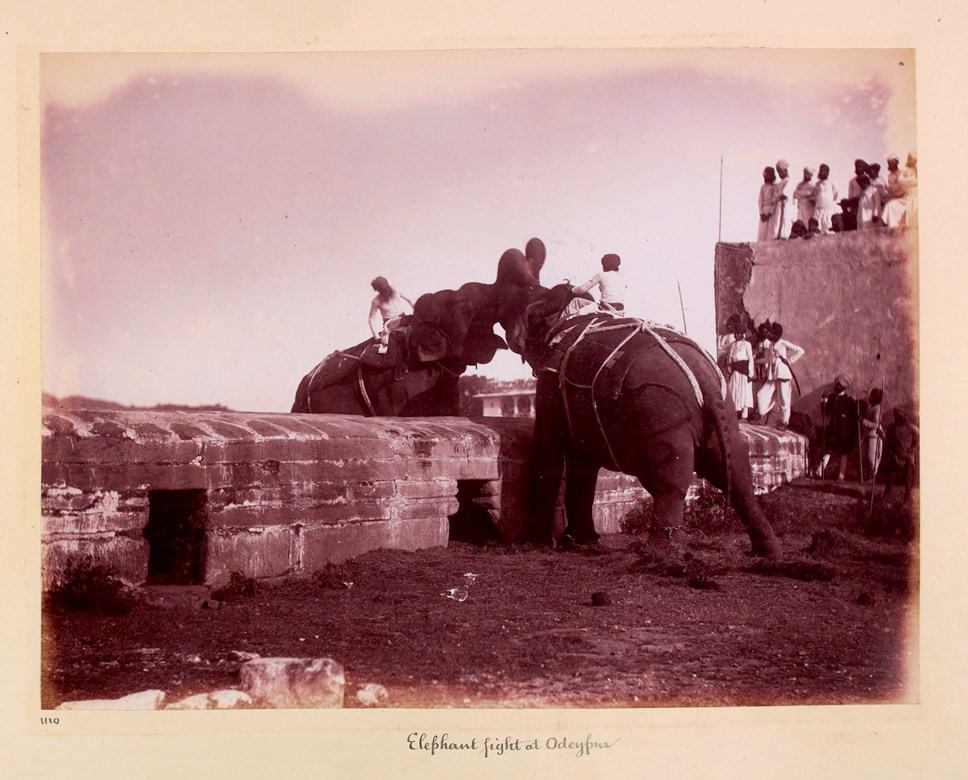
IMAGES OF INDIA ON SHOW AT NATIONAL LIBRARY
Special display marks UK-India Year of Culture
Visual images of India are being celebrated in a special display at the National Library of Scotland that commemorates the 70th anniversary of Indian independence from Britain.
It examines the visual world of pre-independence India as it has been seen through the eyes of different religious faiths, through the imagination of artists and through camera lenses. It shows how the country’s scenery, buildings, inhabitants and customs have been represented over the centuries.
The display, Images of India, is the Library’s contribution to the UK-India Year of Culture which marks the continuing close ties between the two countries since India’s independence in 1947.
Many Scots were part of the British Empire's administration in India. This is reflected in the material in the new display, including works produced by Indians brought back by Scots returning from service in India and some of the early published illustrations produced by Scots who lived there.
Jan Usher, Curator (Social Sciences), who has produced Images of India said: “This small display can only offer a flavour of the sub-continent as it has been seen through Indian and Scottish eyes, from Gujarat in the west to Kolkata in the east, and from art of the early Mughal Empire to letters and books produced as part of the British Raj.”
Some of the highlights include
- Akbar-Nama (Book of Akbar): Akbar was the third Mughal Emperor (r. 1556–1605) and this is the official chronicle of his reign, commissioned by him and written by his court historian and biographer, Abul Fazl. It was written in Persian, the literary language of the Mughals, and includes vivid and detailed descriptions of Akbar’s life and times.
- Ishqnama-I Gulbadan o Naunihal (The loves of Naunihal and Gulbadan): A Deccani Urdu poem composed by Ahmed Ali around 1785. This is an early 19th century manuscript copy with illuminated drawings.
- An 18th century astrological scroll: A Sanskrit scroll of astrological computations with diagrams and mythological figures, made for an individual.
- Watercolours by James Baillie Fraser (1783-1856): Fraser was a Scot who had gone to India to make money to pay off family debts. Once there, he realised his artistic potential, producing a series of works that were some of the earliest views of India. He also commissioned and collected works by Indian artists, as well as writing about his travels.
Images of India will be on show at the Library in George IV Bridge, Edinburgh between 6 July and 20 August, 2017.
Contact Information
Notes to editors
About the National Library of Scotland
The National Library of Scotland is a major European research library and one of the world’s leading centres for the study of Scotland and the Scots - an information treasure trove for Scotland’s knowledge, history and culture. The Library’s collections are of world-class importance. Key areas include digital material, rare books, manuscripts, maps, music, moving images, official publications, business information, science and technology, and modern and foreign collections. The Library holds more than 26 million physical items dating back over 1000 years in addition to a growing library of e-books, e-journals and other digital material. The collection includes over four million books, eight million manuscripts, two million maps and over 45,000 films and videos. Every week the Library collects around 4,000 new items. Most of these are received free of charge in terms of Legal Deposit legislation. Further information is available at www.nls.uk
